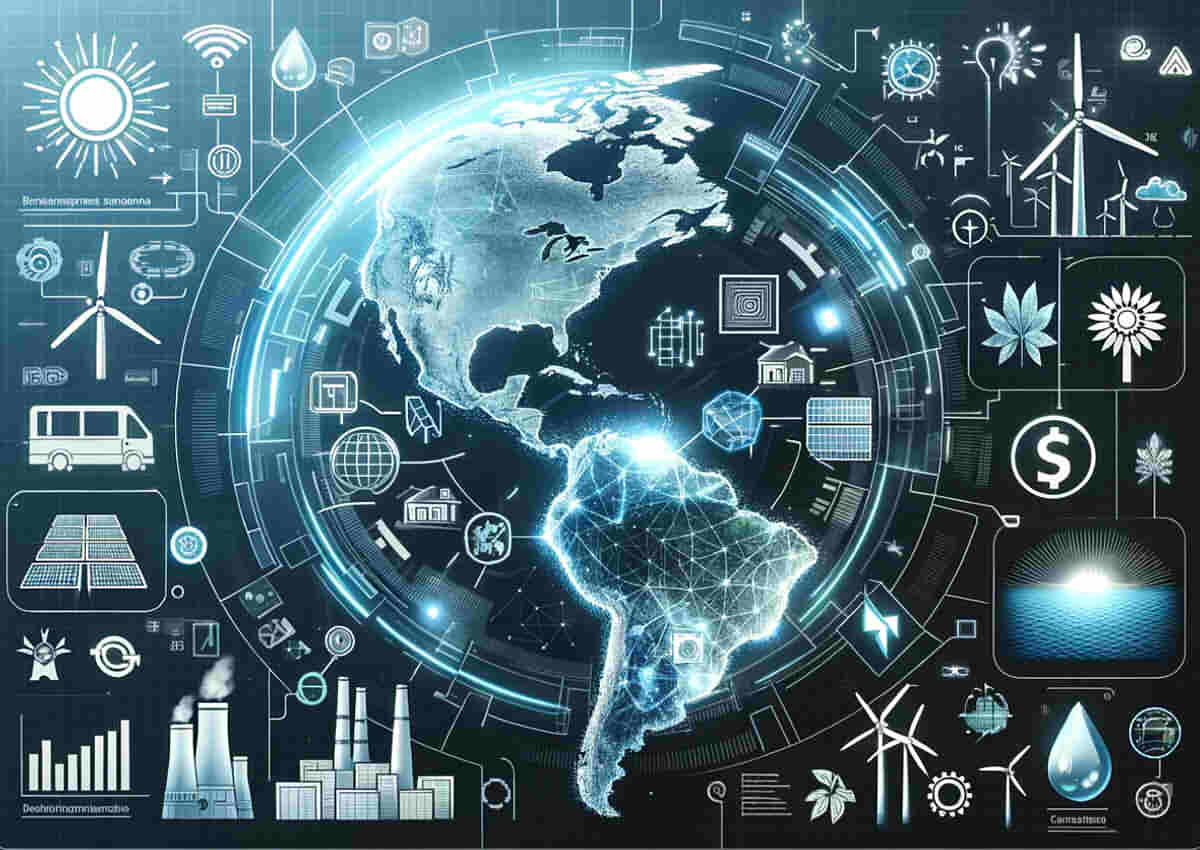Latin America faces a transformative opportunity and a colossal challenge: achieve net zero emissions by the year 2050. This ambitious goal, supported by the Latin American Energy Organization (Olade), requires a massive reorientation in the way the region generates and consumes energy. With an estimated investment of 1.9 billions of dollars, The aim is not only to triple the region's electricity generation capacity but also to profoundly reform its energy matrix., placing renewable energies at the center of this new energy panorama.
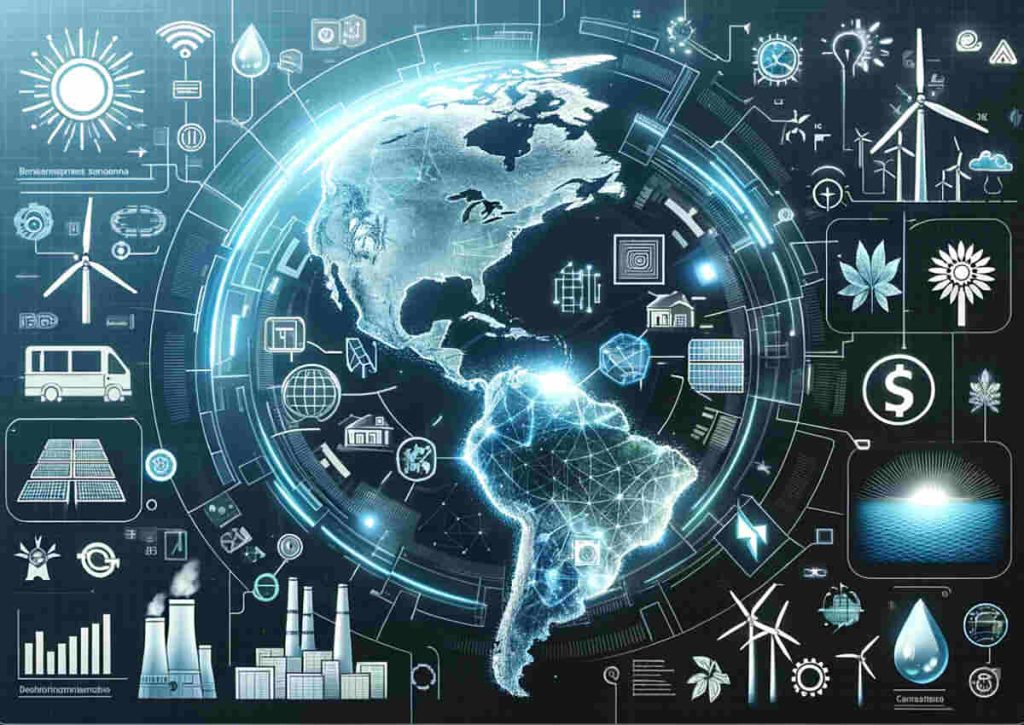
Table of Contents
- Current Context of Energy in Latin America
- Planning and Investment in Renewable Energy
- The Importance of Regulatory Convergence and the Challenges of Integration
- Contrasts and Challenges in the Region
- Infrastructure Development and Electrical Projects in the Region
- Conclusion
This transition towards sustainability is not just a measure to combat climate change, but also a strategy to strengthen energy independence, boost economic development and improve quality of life throughout the region. Nevertheless, The path to this carbon-free future is fraught with challenges. Not only does it require a considerable financial investment, but also changes in infrastructure, innovative energy policies and a stable regulatory framework that attracts private investment and guarantees legal certainty.
Latin America's commitment to the environment and sustainable development has been manifested in its current energy matrix, where a 31% comes from renewable sources, which makes the region one of the greenest in the world. Nevertheless, to meet net zero emissions targets, efforts must be intensified and significant obstacles overcome in terms of energy efficiency and accessibility. The journey is complex and the task is arduous, but the potential to transform and lead the global energy revolution is undeniable. In this context, Latin America not only aspires to keep up, but to lead the way towards a cleaner energy future, resilient and sustainable.
Current Context of Energy in Latin America
The Latin American and Caribbean region is at a crucial moment regarding its energy matrix. Currently, It is characterized by a notable diversity in its energy sources, being one of the greenest regions on the planet thanks to a significant contribution from renewable energies. Nevertheless, This energy landscape is constantly evolving, facing unique challenges that must be addressed to ensure a sustainable and energy secure future.
Although the region stands out for a high percentage of clean energies in its matrix, with an impressive 31% of its energy from renewable sources, there is still considerable dependence on fossil fuels. This duality highlights the need for an energy transition that not only focuses on increasing the participation of renewable energies, but also in progressively reducing dependence on fossil fuels.
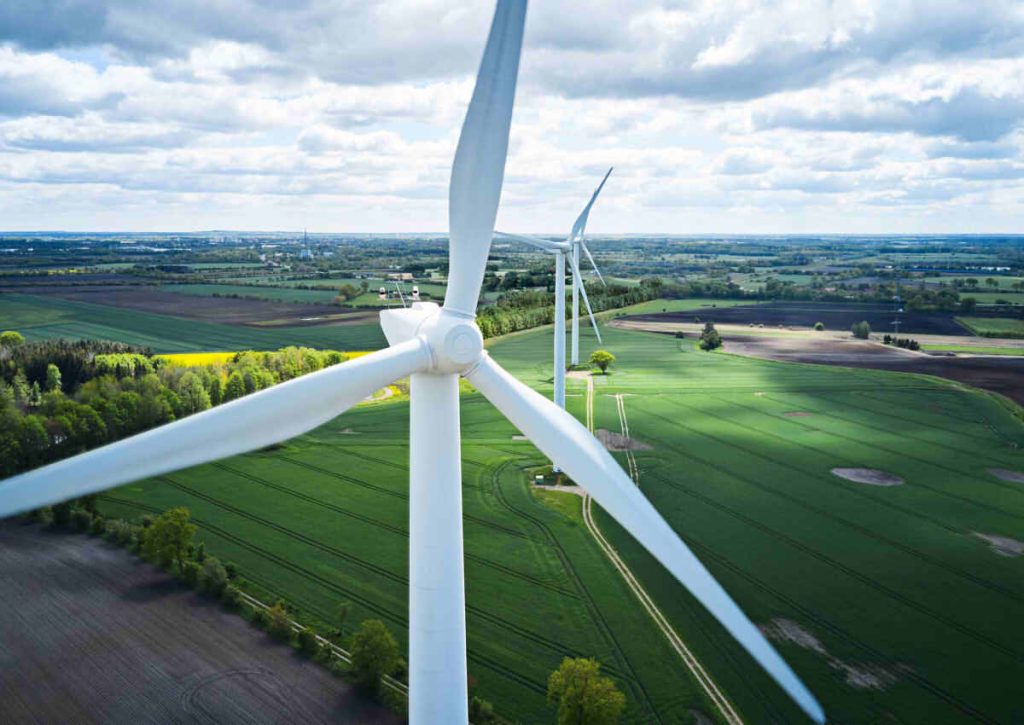
Main obstacles
A significant obstacle on this path is energy efficiency. Despite the advances, The region faces challenges in optimizing energy use, resulting in increased consumption and, but still, in increased greenhouse gas emissions. Besides, The COVID-19 pandemic has had a negative impact on advances in energy efficiency, exacerbating existing challenges and jeopardizing the progress made in recent years.
Another crucial aspect is the access to electricity. Despite considerable efforts, there are still 16.2 millions of people in the region who do not have access to this essential service. This reality not only impedes economic and social development, but also highlights the significant inequalities within the region. Guaranteeing universal access to energy is essential not only to improve the quality of life of the population, but also to promote sustainable development and social inclusion.
Planning and Investment in Renewable Energy
Latin America's ambitious goal to achieve net zero emissions by 2050 implies a deep and strategic transition towards renewable energies. This transformation, nevertheless, demands significant investment and meticulous planning to reshape the region's energy infrastructure and adapt it to the energy sources of the future.
It is estimated that the region will require a colossal investment of 1.9 billions of dollars to triple its electricity generation capacity. This financial effort will not only be allocated to the installation of new generation infrastructure, but also to the modernization and expansion of the transmission and distribution networks to efficiently integrate renewable energies into the energy matrix.
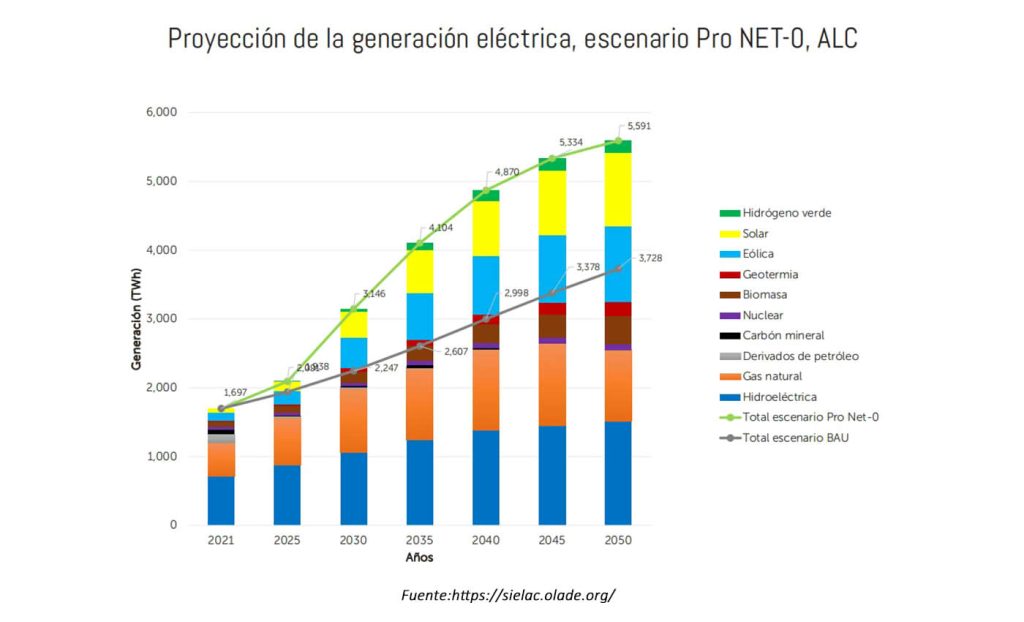
In terms of composition of the energy matrix, a significant change is expected in the participation of various energy sources. Wind and solar energy are projected to, pillars of the energy transition, increase their participation in 14% current to an impressive 50%. Secondly, hydraulic power, although it will continue to be an important source, will see its participation reduced 42% al 26%. Besides, green hydrogen, which today has a minimal presence, is called to play a crucial role, representing the 2% of electricity generation for 2050. This transition not only reflects a shift towards more sustainable sources, but also a diversification in the energy matrix that can improve the security and energy independence of the region.
The Importance of Regulatory Convergence and the Challenges of Integration
The transition towards an energy model based on renewable sources in Latin America not only requires financial and technological investment, but also a thorough review of existing regulatory frameworks. Regulatory convergence in strategic sectors such as mining, hydrocarbons, electricity and telecommunications is essential to create an enabling environment that promotes the adoption of renewable energies and facilitates their integration into the energy matrix. William Villalobos, president of the Ibero-American Association of Energy Law (ASIDE), underlines the importance of this regulatory convergence and recognizes the strategic role that local mineral reserves play in ensuring the electrification and decarbonization of global economies.
One of the main problems identified in the current regulation is the integration of variable renewable energies and energy storage. These elements are crucial for a successful energy transition, since they allow greater flexibility and stability in the electrical network. Challenges include strengthening and financing the network, aspects that are fundamental to support the intermittency of sources such as solar and wind, and to integrate energy storage systems efficiently.
The IEA report “Electricity Grids and Secure Energy Transitions” highlights the magnitude of this challenge, pointing out that for 2040 will need to be added or replaced 80 millions of kilometers electrical cable lines, which is equivalent to the size of the global network built in the last 100 years. This data highlights the critical need to invest in electrical grids to support greater electrification of activities that have historically depended on fossil fuels..
Response to challenges
To address these challenges, It is essential to develop regulatory frameworks that offer legal certainty and promote investment in renewable technologies. Planning and creating investment incentives are essential to achieve the region's ambitious renewable energy goals. Although many countries have public policies that set energy transition objectives, The key question is how realistic and executable these plans are in the current context..
The participation of the private sector and academia is vital in the deployment of the infrastructure necessary for the transition. Nevertheless, to attract the necessary investments, It is imperative to take care of country risk and offer a climate of legal security. As Villalobos points out,, “without legal security there is no investment, “Without investment there is no transmission and without it there is no transition.”.
Contrasts and Challenges in the Region
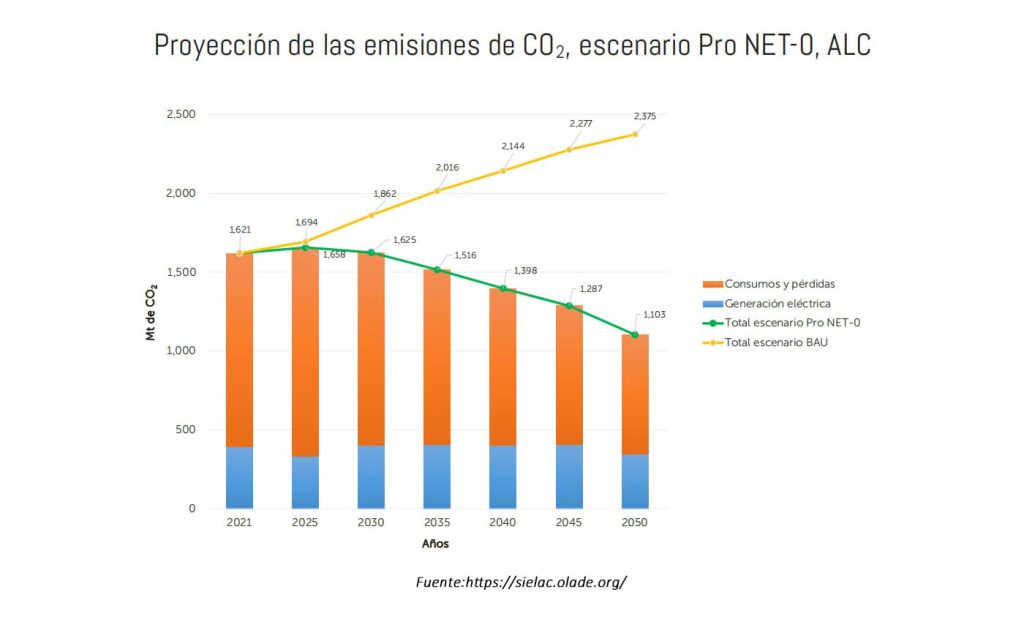
Latin America and the Caribbean are at an energy crossroads, reflecting a notable contrast between the expansion of renewable energy and the persistent dependence on fossil fuels. This dichotomy not only illustrates the diversity of energy resources and policies in the region, but also highlights the challenges inherent in the transition to a more sustainable energy future.
In countries like Argentina, Mexico and Brazil, Continued investment seen in fossil fuel infrastructure. Argentina is exploiting its vast shale oil and gas resources in Vaca Muerta, one of the largest unconventional hydrocarbon deposits in the world. Mexico, under the current administration, has prioritized the consolidation of the state oil industry and the generation of electricity from fossil fuels, relegating the development of renewable energies to the background. Brazil, equally, continues to advance in the exploitation of its deepwater oil resources, even in the sensitive Amazon region.
These policies, although they can offer short-term economic benefits and seek to ensure energy sovereignty, are not free from significant risks. Climate risks are evident: burning fossil fuels is a major contributor to climate change. Besides, There is an economic risk in investing in infrastructure that could become stranded assets in the future., as the world moves away from fossil fuels and toward cleaner, renewable energy.
Renewable Energy Outlook
In contrast to this trend towards fossil fuels, There are promising developments in the field of renewable energy. Brazil and Chile are examples of leadership in this sector. Brazil is rapidly expanding its wind and solar energy capacity, harnessing its vast potential. Chile, for his part, has committed to one of the most ambitious decarbonization policies in the region, investing in solar energy and wind, and exploring the potential of its unique geography for geothermal and wave energy.
These renewable energy projects not only represent a route towards mitigating climate change and reducing greenhouse gas emissions., but also present significant economic opportunities. Power generation from renewable sources is increasingly cost-efficient and can offer a route to energy security without the environmental and price volatility risks associated with fossil fuels..
Nevertheless, The transition towards a cleaner and more sustainable energy matrix is not without challenges. Integrating intermittent energy sources such as solar and wind into the electrical grid requires significant investments in infrastructure and energy storage mechanisms.. Besides, It is crucial that this transition be carried out in a socially just manner, ensuring that communities dependent on fossil fuel industries are not left unprotected.
Infrastructure Development and Electrical Projects in the Region
The energy panorama of Latin America and the Caribbean It is marked by vigorous and multifaceted development of infrastructure and electrical projects. These efforts not only seek to meet the growing demand for energy in a sustainable way, but also improve the quality and accessibility of electricity supply throughout the region. Next, some notable developments in several countries stand out:
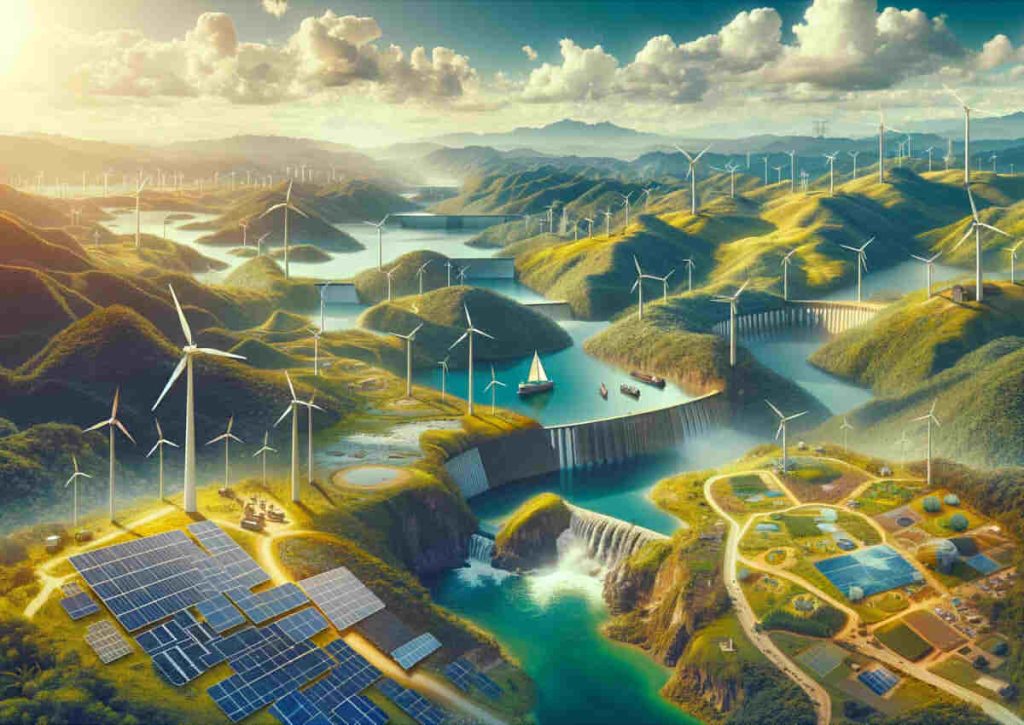
Argentina
The country is carrying out important electrical infrastructure works. The construction of transformer stations and the expansion of generation capacity not only improve the quality and reliability of electrical service, but also contribute to reducing the costs and emissions of thermal generation. These initiatives reflect Argentina's commitment to continuous improvement in its energy infrastructure..
Bolivia
Transmission and generation projects with renewable sources stand out, which are contributing to reducing electricity rates and improving the quality of supply. The integration of isolated systems into the National Interconnected System (SIN) has been a key component in achieving these advances, demonstrating the potential of renewable energy in the Bolivian context.
Brazil
The resumption of electrical transmission projects, such as the Tucuruí Line, that will connect Roraima with the SIN, It is a significant step. These projects not only seek to reduce costs and dependence on fossil fuels, but also strengthen the country's energy infrastructure and promote greater national integration.
Ecuador
The country is investing significantly in improving distribution systems and transmission works. These investments are increasing national electricity coverage, reflecting the government's commitment to universalizing energy access.
The Savior
An increase in installed capacity is observed, with a particular emphasis on projects solar photovoltaics and liquefied natural gas. These projects not only diversify the country's energy matrix, but they are also steps towards greater sustainability and energy security.
Conclusion
On the threshold of an era of energy transformation, Latin America faces an unprecedented opportunity to redesign its energy landscape and achieve the ambitious goal of net zero emissions by the year 2050.
The investment of 1.9 trillion dollars needed to triple electricity generation capacity and radically change the energy matrix towards renewable sources is a monumental task. Nevertheless, beyond being a challenge, represents an investment in the future of the region. The shift towards wind energy, solar, hydraulics and the emerging green hydrogen sector not only aim to mitigate the effects of climate change, but also to strengthen energy independence, to boost economic growth and improve the quality of life of millions of people.
Regulatory convergence, advances in infrastructure and electrical projects, and overcoming contrasts and challenges inherent to the energy transition are cornerstones in this process. As Latin America moves towards this energy future, collaboration between governments, the private sector and civil society will be key.
In conclusion, Latin America not only aspires to comply with global emissions reduction commitments, but also seeks to lead the way towards an era of clean and sustainable energy. The commitment to the energy transition is a testament to the region's potential to transform its challenges into opportunities, setting the course towards a greener future, resilient and prosperous for present and future generations.

